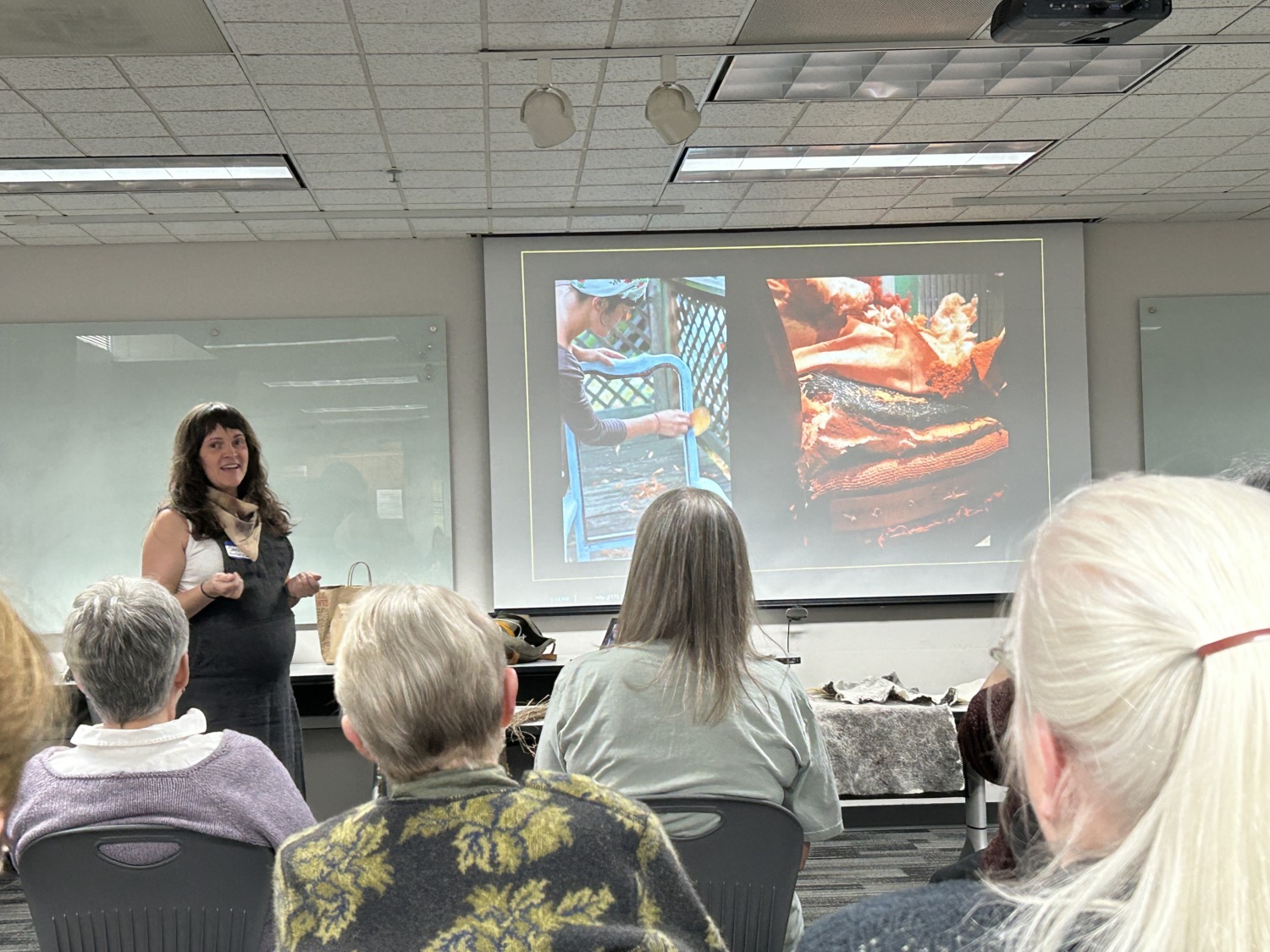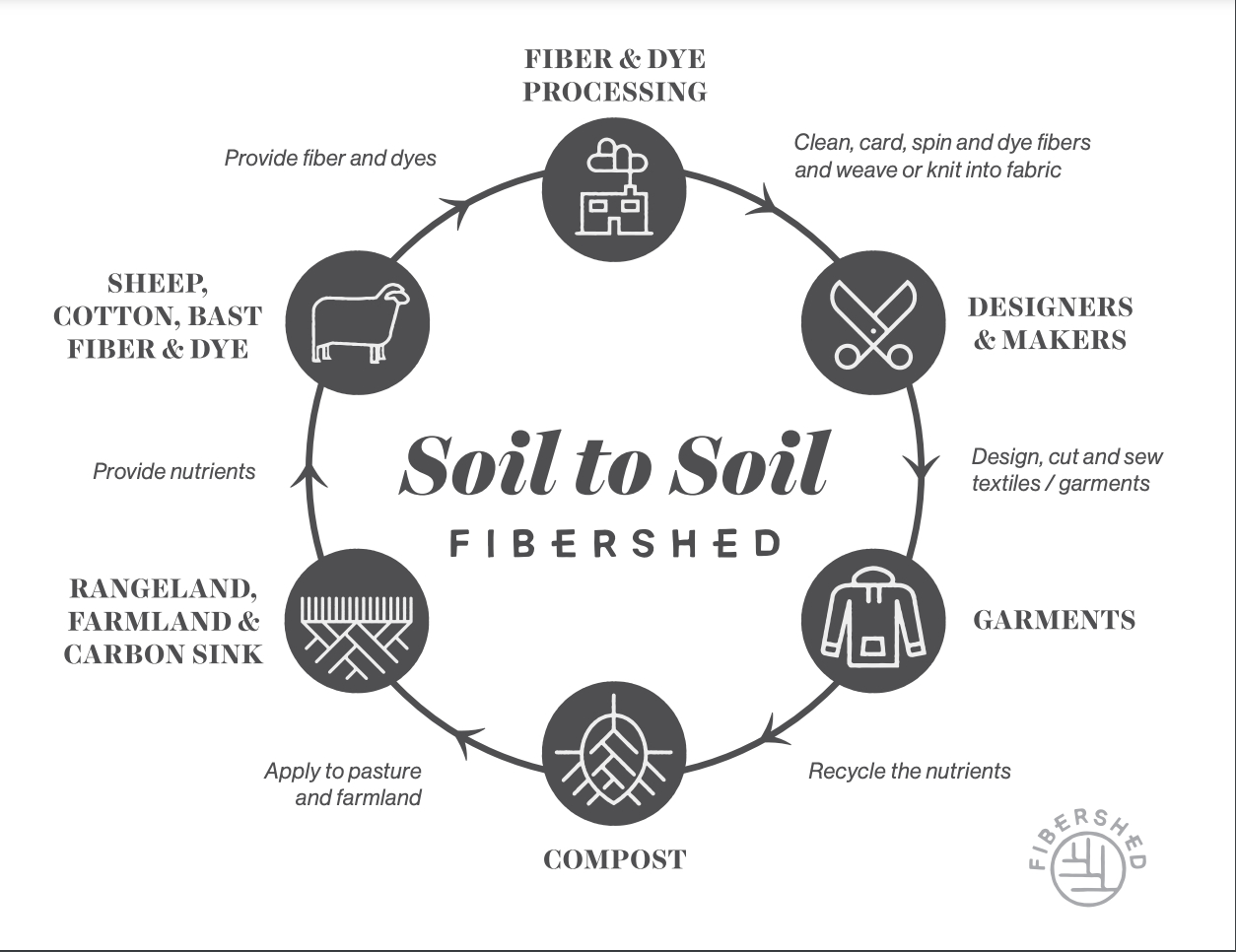I recently attended at talk by the organizer of the Rust Belt Fibershed, sponsored by the Central Ohio Weaving and Fiberarts Guild. I joined the Guild in 2022 and manage to get to one or two meetings a year, usually when they have speakers I want to hear.
Living sustainably is important to me, although it is difficult to do. I have previously written about eating local. Eating locally is easier to do in the summer than the winter. It also requires many stops for groceries instead of just one stop at Kroger. I am interested in eating local, I just am not very good at taking the time to do it. My excuse is that we aren’t in one location for very long at a time.
The Rust Belt Fibershed takes living sustainably to another level. The Fibershed consists of 250 mile radius outside of Cleveland, Ohio including parts of Michigan, southern Ohio, Western Pennsylvania and Western New York. Their goal is to build a community that collaboratively supports locally grown textiles. Locally grown textiles decrease consumption of fast fashion and work to restore soil health. The Fibershed aspires to connect everyone in all parts of a local fiber system: farmers, fiber processors, designers, shop owners, fiber enthusiasts, and consumers.
The Rust Belt Fibershed is trying to hook up farmers of wool, flax, alpaca and plant dyes with manufacturers of cloth and clothing. They teach stewardship of land and resources, foster friendship and creativity, and facilitate conversations and strategies that address the challenges of a localized fiber supply chain. The Fibershed is educating people about knowing where their clothing comes from. What percentage is natural fibers? Where was it grown, processed, manufactured, sewn? I have to admit I haven’t taken the time to learn any of this about the clothing I wear and I’m a textile person!
Rust Belt Fibershed is trying to connect people who facilitate all the steps to manufacturing clothing in our area. Imagine someday being able to purchase clothes that come from wool or flax from Ohio, from material woven in Ohio and made into clothing in Ohio. It’s an ambitious program, especially in scaling it so that everyone involved can make a profit.
Toward this end, the Fibershed has several projects going. They are encouraging people to grow flax with a goal of 50 growers in 2024. It is called the Rust Belt Linen Project, and they had 39 growers in 2023. I love wearing linen, but there is not a single place in the United States that is processing flax for textile production. Consequently, American farmers aren’t growing flax for textiles.
Another project with a creative name is Soil Your Undies. It turns out that burying a pair of 100% cotton underwear is a good way to see how healthy your soil is. If it biodegrades in a couple of months, your soil is very healthy with lots of microbes. Soil Your Undies would be a great project for school groups to teach kids about soil health. The Soil Your Undies project was the brainchild of the US Department of Agriculture, Natural Resources Conservation Service. Such a fun idea coming from a government agency!
Another Fibershed project is the One Year One Outfit. They aren’t suggesting that you wear one outfit for a whole year. Instead, they are encouraging groups of people to get together to make an outfit from soil to wearable garment in a year. From the raw material to the finished garment. Talk about slow fashion! Having done some of this, I know how much work it is. But it is also a way to get people more interested in where their clothing comes from. The Rust Belt Fibershed is also working with Kent State University’s School of Fashion Design which seems like a wonderful partnership.

The two founders of the Rust Belt Fibershed are Jessalyn Boeke and Sarah Pottle. Both of them are teachers, mothers, weavers, dyers, and committed to living sustainably. They are also twins. The Fibershed is a labor of love and a way to express their passion for a sustainable world. I wish them well in their endeavors and hope their efforts bear fruit.

